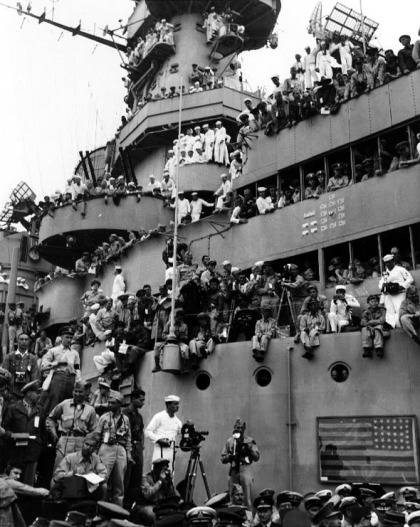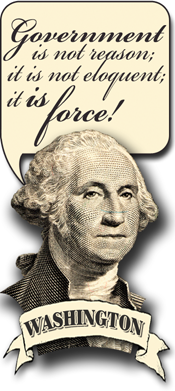Filed under: Cool Site of the Day, History, Japan, Military, National Security, Politics, The United States, World War II | Tags: 73 Years Ago Today, The End of World War II, The Japanese Surrender

It was seventy three years ago today. There are few left who remember at first hand, and even new recruits who were 20 then would be 93 today. Victor Davis Hanson remarked a while ago, that history is about wars. Do we gradually become inured to war as it grows more distant? Are those most bellicose in the present the ones who are historically the most ignorant? How much of our present attitudes are related to how much, and how accurate is our knowledge of history?
This original post was written in 2009, with references to President Obama’s current words and actions about the Middle East and Afghanistan. I left that part our and reprinted the history. The first link below is to pictures of the Missouri. This one is to the history of the Last Battleship
The Emperor Hirohito, of course, did not come down to the battleship Missouri in Tokyo Bay for the surrender ceremonies. To misunderstand that demonstrates a lack of understanding of the Pacific War and the relationship of the Emperor to the Japanese people. In their 2000 year history, the Japanese had never surrendered to anyone. Japan was determined to fight on, even after Okinawa was lost. The Japanese navy had effectively ceased to exist, but an all-out defense of the homeland beachhead was planned. Rebellious army officers planned a palace coup which was put down. On August 14, 1945, the Emperor recorded a speech which was broadcast to the nation at noon on the following day, August 15.
The Japanese people were stunned. They had never before heard the Emperor’s voice. The formal surrender ceremony took place aboard the battleship USS Missouri in Tokyo Bay on September 2, 1945. The Japanese representatives on board the Missouri were Foreign Minister Mamoru Shigemitsu (wearing top hat) and General Yoshijiro Umezu, Chief of the Army General Staff. Behind them are three representatives each of the Foreign Ministry, the Army and the Navy.

Worth noting is an article from The New York Times that quoted Toshikazu Kase, a 100-year-old veteran of the Imperial Japanese government. (Second from right in middle row in the top hat). He would write in his memoirs about the surrender to MacArthur on the deck of the Missouri:
Here is the victor announcing the verdict to the prostrate enemy. He can impose a humiliating penalty if he so desires. And yet he pleads for freedom, tolerance and justice. For me, who expected the worst humiliation, this was a complete surprise. I was thrilled beyond words, spellbound, thunderstruck.
Understanding the history of our relations with Japan is crucial to understanding our relationship and friendship with Japan today. Understanding the history of Israel and Palestine helps to keep from making mistakes about who our friends are and why. Understanding the history of Latin America keeps a president from siding with some of the region’s worst dictators, and confusing our Constitution and laws with the constitution and laws of Honduras.
These things matter, and if a President does not have the background, it should be included in briefings. If his speechwriters don’t have the background, they should look it up. And if the State Department doesn’t have the background, God help us .
(the headline comes from a quotation from Ralph Peters)
I ran onto this piece today, a pictorial of the Japanese memorial service in honor of those who died in World War II, with a picture of Japan’s Emperor Akihito and Empress Michiko.That reminded me of a book I’ve had for years, an autobiography by Elizabeth Gray Vining, which I recommend highly. She became a member of the Society of Friends after her young husband was killed in an auto accident in which she survived. When the Japanese Emperor Hirohito decided to employ an American Quaker woman as a tutor for his son and the future Emperor, they turned to Elizabeth Vining. Her first book is
Windows for the Crown Prince followed by the autobiography Quiet Pilgrimage in which she tells about the appointment.She wrote:
“In the fall of 1946 a quiet Philadelphia woman was suddenly picked up, transported halfway around the globe and dropped down again in the middle of the oldest, the most formal, the most mysterious court in the world, the court of Japan. I was that woman.”
In her autobiography she includes much of what didn’t appear in the earlier book. I found the whole thing absolutely fascinating.
Leave a Comment so far
Leave a comment


























